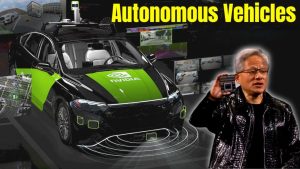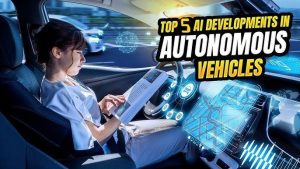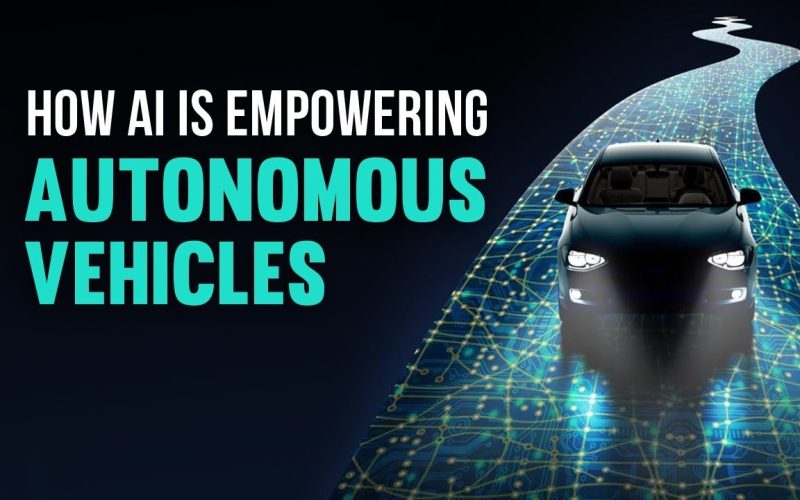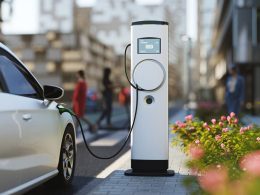Introduction
In 2025, AI in vehicle safety is no longer futuristic it’s here. Cars use artificial intelligence to spot hazards, prevent collisions, and keep drivers and passengers safe. From built‑in cameras to smart sensors, modern vehicles rely on advanced driver assistance systems powered by AI. These systems react faster than humans, reducing accidents and saving lives. In this article, we will explore how vehicle safety technology has evolved with AI. We’ll cover key features, the role of machine learning in automotive safety, and what the future holds for safer roads.
What Is AI in Vehicle Safety?

AI in vehicle safety refers to the use of machine learning and algorithms to enhance a car’s ability to perceive the road. Cameras, radar, LiDAR, and ultrasonic sensors feed data to onboard computers. AI models then analyze this data in real time. The AI detects lanes, other vehicles, pedestrians, and road signs. It issues warnings or takes action to avoid danger. This technology goes beyond simple sensors. It uses patterns from millions of miles of driving data to predict and react to risks. In 2025, cars are smarter and safer thanks to these AI systems.
Key AI Technologies Enhancing Vehicle Safety in 2025

1. AI-Powered Advanced Driver Assistance Systems (ADAS)
Advanced driver assistance systems (ADAS) have become standard in many new cars. ADAS uses AI to support drivers and reduce errors. Key ADAS features include:
- Adaptive cruise control adjusts your speed to maintain a safe following distance.
- Lane departure warning alerts you if the car drifts out of its lane.
- Lane keep assist gently steers the vehicle back into its lane when needed.
- Automatic emergency braking applies brakes if a collision is imminent.
These systems rely on computer vision in cars to interpret video feeds. AI models trained on diverse road conditions ensure they work in rain, fog, or darkness. By combining radar and camera data a process called sensor fusion ADAS can detect obstacles even in poor visibility. In 2025, ADAS has grown more reliable, with fewer false alarms and smoother interventions.
2. AI in Autonomous Driving: Safety Impact
While ADAS offers partial automation, full autonomous driving safety requires higher levels of autonomy. In 2025, many vehicles feature Level 2 or Level 3 autonomy. This means cars can control steering, acceleration, and braking under certain conditions. AI handles complex tasks like merging onto highways, navigating traffic jams, and parking.
AI systems use deep neural networks to predict the behavior of other road users. They recognize that a pedestrian near a curb might step onto the road. They also learn from vast fleets of vehicles sharing data, improving performance over time. Redundant systems ensure safety if one sensor fails, others back up the AI’s decisions. As autonomy advances, drivers can trust that AI will keep them and others safe on the road.
3. Predictive Maintenance and Real-Time Diagnostics
Beyond preventing accidents, AI also enhances safety through predictive maintenance. Modern cars generate constant streams of data from hundreds of sensors. AI analyzes this data to predict component failures before they happen. Worn brake pads, low tire pressure, or engine issues trigger alerts well in advance. This gives drivers and fleets time to schedule maintenance.
In 2025, real-time diagnostics systems send over-the-air updates and alerts directly to your phone. A minor issue that might lead to brake failure is flagged early. You no longer wait for a dashboard warning light. Instead, AI-driven diagnostics protect you by ensuring your vehicle stays in top condition. This proactive approach reduces breakdowns and keeps roads safer for everyone.
4. Computer Vision and Sensor Fusion
At the heart of AI-powered vehicle safety lies computer vision and sensor fusion. Cameras capture live video of the car’s surroundings in high resolution. Radar measures the speed and distance of nearby objects, while LiDAR creates a precise 3D map. Ultrasonic sensors handle close-range detection for parking and blind‑spot monitoring.
AI combines these inputs to form a unified view of the environment. This sensor fusion allows vehicles to detect obstacles that a single sensor might miss. For example, radar can see through rain, while cameras read traffic signs. The AI merges both data streams to ensure accurate perception, even in challenging conditions. This multi‑sensor approach leads to better decision-making and faster responses.
5. Vehicle-to-Everything (V2X) Communication
In 2025, vehicle-to-everything communication (V2X) is gaining traction as a safety enhancer. V2X enables cars to talk to each other and to infrastructure. Traffic lights, road signs, and even other vehicles share data on speed, location, and road conditions. AI processes this information to anticipate hazards beyond the line of sight.
Imagine a car ahead suddenly braking around a blind corner. Your vehicle receives an AI‑driven warning before you see the brake lights. Emergency vehicles can signal their approach, and traffic lights can hold a green phase to clear an intersection. This real-time network of connected vehicles and infrastructure boosts safety, prevents accidents, and smooths traffic flow.
Tips for Drivers: Leveraging AI for Safety

Even with advanced AI systems, drivers play a key role in safety. Here are some tips to make the most of AI in vehicle safety:
- Keep sensors clean: Wipe cameras and radar covers regularly to ensure clear data.
- Stay updated: Install software updates early, as they often improve AI models.
- Understand system limits: Know when ADAS features may not work, such as on heavy snow.
- Maintain your vehicle: Regularly service brakes, tires, and software to support AI diagnostics.
- Stay attentive: AI assists but does not replace responsible driving. Always keep your eyes on the road.
Future of AI in Vehicle Safety

The future of AI in vehicle safety looks incredibly promising. As technology improves, AI will continue to evolve and become even more integrated into vehicles. In the coming years, we can expect AI systems to become more sophisticated, allowing for fully autonomous driving, where vehicles can operate without any human intervention. The safety features of AI-powered cars will likely expand to include better predictive capabilities, making it possible to foresee potential accidents before they even happen. As AI systems become more accurate and reliable, the number of road accidents could decrease significantly. In the future, AI might even be able to personalize safety features based on the driver’s habits, creating a more customized and safe driving experience. With continuous advancements, AI has the potential to make our roads safer and smarter than ever before.
Comparative Table: Key AI Safety Features Compared
| Feature | Description | Benefit |
|---|---|---|
| Adaptive Cruise Control | Uses radar and AI to maintain safe following distances | Reduces driver fatigue on long trips |
| Automatic Emergency Braking | AI predicts collisions and applies brakes if driver does not react | Prevents or lessens the impact of crashes |
| Lane Keep Assist | AI steers the car back into lane when drifting is detected | Reduces side‑swipe and run‑off‑road events |
| Predictive Maintenance | AI analyzes sensor data to forecast mechanical failures | Avoids breakdowns and enhances reliability |
| V2X Communication | Vehicles share data with infrastructure and other vehicles | Anticipates hazards beyond line of sight |
Conclusion
By 2025, AI is enhancing vehicle safety in ways once thought impossible. Advanced driver assistance systems keep you centered in your lane and brake for unexpected obstacles. Autonomous driving safety features control steering and speed in complex traffic. Predictive maintenance prevents breakdowns, while computer vision and sensor fusion ensure accurate hazard detection. With vehicle-to-everything communication, cars alert each other and infrastructure to dangers beyond sight. Together, these technologies are making roads safer, reducing accidents, and saving lives around the world.
Call to Action
Ready to experience the latest in AI vehicle safety? Explore models equipped with these cutting‑edge features and take control of your safety on the road. Visit our website to learn more about vehicles harnessing the power of AI and find your next safe, smart ride today!












